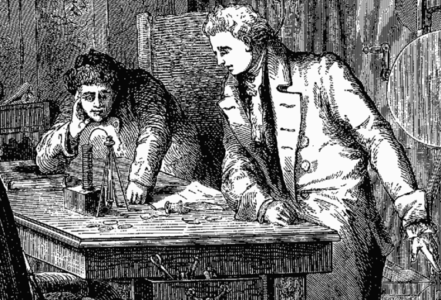
Electrolysis
On 2nd May 1800, William Nicholson (1753-1815) from London and his friend Sir Anthony Carlisle (1768-1840) from Co. Durham worked together on an experiment into an aspect of electricity that was to launch ground-breaking industrial developments. These include the production of pure metals, electroplating and electrochemical machining.
Nicholson had started the very first science journal three years beforehand and had learnt of investigations being carried out on electricity and metals. He and Carlisle discovered a technique for isolating the constituent chemical elements of an ionic substance by passing an electric current through its fluid or molten state. Such a state allows the ions to become mobile and gather together with identical ions. This is electrolysis and its uses range from supplying oxygen in spacecraft to the removal of body hair!
Nicholson and Carlisle first used electrolysis on water to decompose it into hydrogen and oxygen. They published their exciting findings in Nicholson’s science journal. Sir Humphry Davy then used it to isolate sodium, potassium, calcium, strontium, barium, magnesium and lithium, and in 1834 Michael Faraday formulated his ‘laws of electrolysis’.
(Image: Wikimedia Commons / Public domain)
